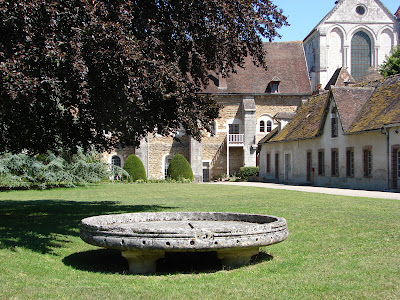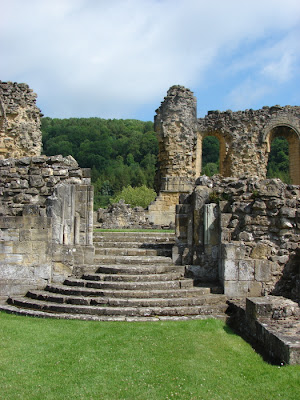location:
| Savigny-le-vieux, Manche, France |
founded:
| 1112 |
daughter of:
| Clairvaux (originally Savigniac, admitted to the Cistercian order in 1147) |
current status:
| ruins |
visit:
| all year round |
pictures taken :
| September 2012 |
The Cistercians were not the only order founded in reaction to perceived Benedictine laxity; a number of other small orders appeared around the turn of the twelfth century, though most were unable to sustain the organisation needed to flourish. Savigny, on the Normandy-Brittany border, was one such: founded in the early 1100s, its initial growth was rapid, and it established 33 daughter houses, many of them in Britain, owing to its proximity to the Northern French coast. However, it was the very fact that these daughter houses were so widespread that caused difficulties of government for the mother house at Savigny. Serlon, the fourth Abbot of Savigny, entered into discussion with Bernard de Clairvaux and the entire order was admitted to the Cistercian order, to whom they felt spiritually close, in 1147.
The Abbaye de Savigny continued to flourish for many years afterwards, and received a number of distinguished guests (Henry II of England met with emissaries of the Pope there, after the assassination of Thomas Becket in 1170). In 1465, King Louis XI granted the abbey royal protection. However, its downfall seems to have begun with its sack by the Calvinists in 1562, and the last twelve monks were expelled in 1789 during the Revolution. Although the inventory of clergy and churches ordered by the Assemblée Constituante Nationale in 1790 describes the abbey church as “grand, majestic, the sanctuary magnificently decorated with marble of different colours” and containing “great riches”, the building was pillaged, then sold as a quarry. It was said at that time that not a house was built in Savigny-le-vieux or its surrounding towns and villages which did not contain stone from the Abbaye de Savigny.
Today, only two doorways in the cloister and the outline of the abbey church remain.
 |
| approach to the abbey, from the west end |
| doorway on the south side of the cloister |
| doorway from the abbey church to the cloister |
| east end of the abbey church |













































